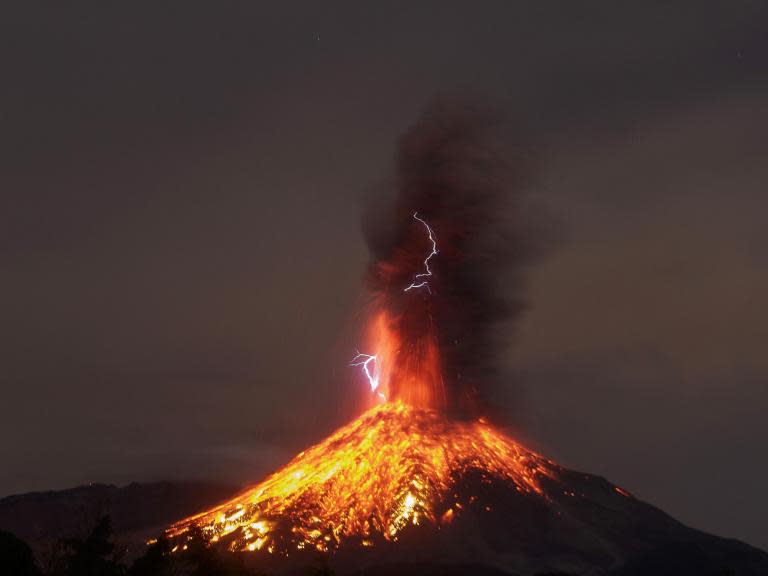Volcanic thunder sound captured for first time by scientists
Scientists have for the first time captured the cracking sound of volcanic thunder – a feat many considered impossible.
An ash cloud rising from a volcano can contain lighting, which observers previously said produced an eerie popping sound.
But geophysicists have previously been unable to record the noise, because they could not distinguish it from other banging and rumbling sounds made during an eruption.
Now, scientists have recorded the thunder produced by the Bogoslof volcano, on Alaska’s Aleutian Islands, using powerful microphones positioned some 40 miles away.
The thunder sounds like pops and clicks over the low-pitched rumble of the eruption.
“It’s something that people who’ve been at eruptions have certainly seen and heard before, but this is the first time we’ve definitively caught it and identified it in scientific data,” said Matt Haney, a seismologist at the Alaska Volcano Observatory in Anchorage and lead author of the new study published in Geophysical Research Letters.
“If people had been observing the eruption in person, they would have heard this thunder,” Mr Haney said. “I expect that going forward, other researchers are going to be excited and motivated to look in their datasets to see if they can pick up the thunder signal.”
Bogoslof started erupting in December 2016 and erupted more than 60 times until the following August. Many of the eruptions produced clouds of ash rising more than six kilometres (20,000 feet) high.
Eruptions on 8 March and 10 June created good conditions for monitoring the thunder, Mr Haney said, since they emitted huge ash plumes that remained in the sky for several hours after the eruptions had ceased.
Without the rumbling sound in the background, the thunder produced by lighting in the clouds could be heard more easily.

 Yahoo News
Yahoo News 

